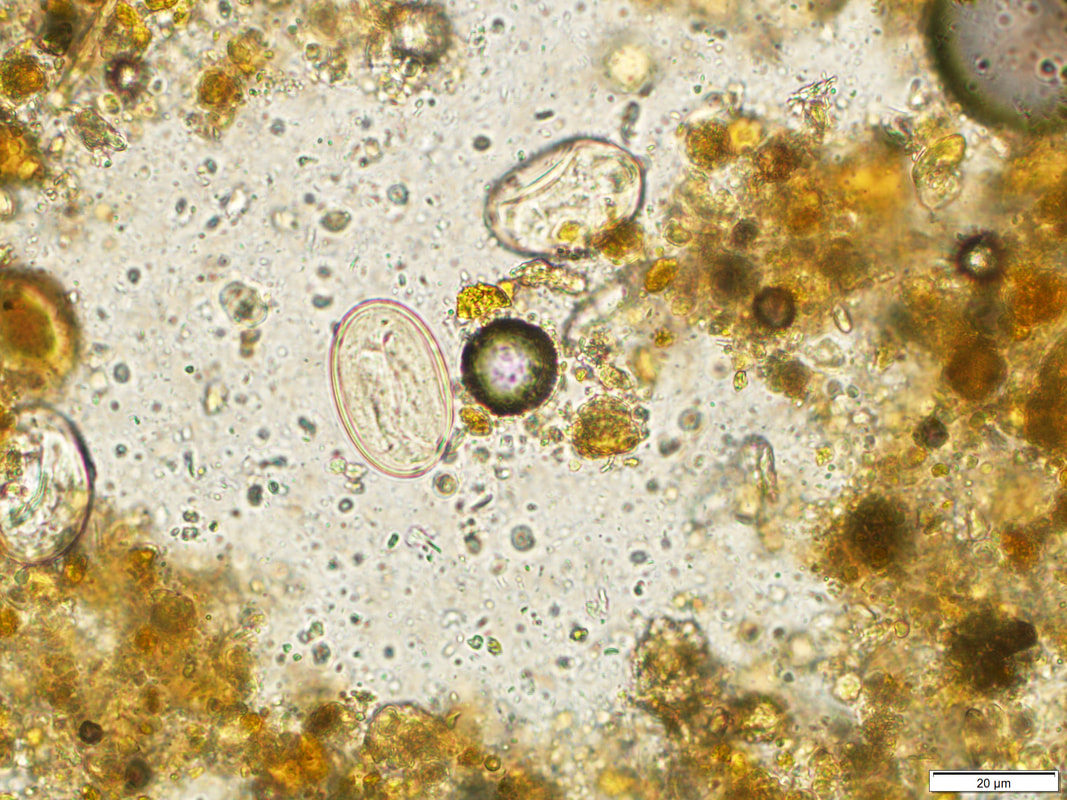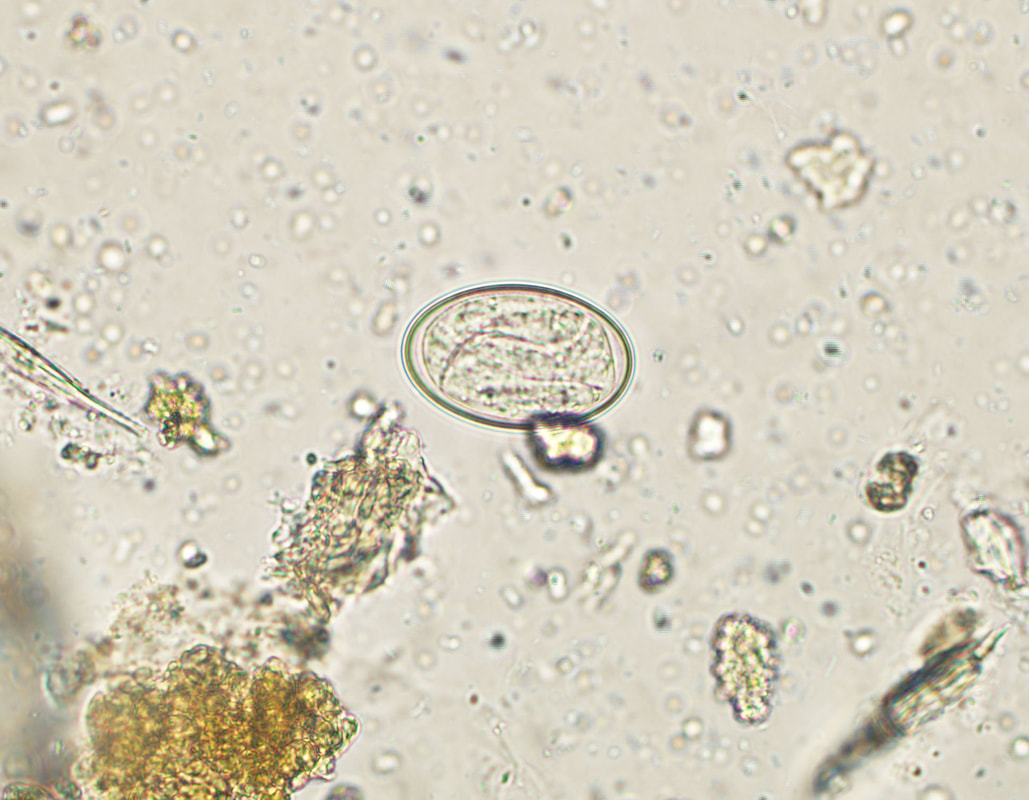A fluke finding: is it a fluke egg?!An approximately 20-year-old, intact male African spurred tortoise was presented to an exotic animal practice with a history of bleeding from the cloaca. Centrifugal fecal flotation with Sheather’s sugar solution (specific gravity, 1.25) and a direct fecal smear with saline solution were performed. A moderate number of large (> 60 µm), brown and yellow/orange colored, oval shaped objects with a cap-like structure on one side (Figures 1 & 2) were observed on the direct fecal smear. Centrifugal fecal flotation revealed many similar looking objects but with a collapsed appearance (Figures 3 & 4). Figure 1: Direct fecal smear with saline solution. 200X magnification. Figure 2: Direct fecal smear with saline solution. 600X magnification. Figure 3: Centrifugal fecal flotation with Sheather’s sugar solution. 400X magnification. Figure 4: Centrifugal fecal flotation with Sheather’s sugar solution. 400X magnification. Nyctotherus spp. cysts
Nyctotherus is a large ciliated protozoa commonly found in herbivorous reptiles such as tortoises and some species of lizards. Nyctotherus spp. cysts are often confused with trematode or oxyurid eggs due to the presence of a structure that resembles an operculum on one side. Although uniformly distributed cilia should be apparent on cysts, they are subtle and can be easily overlooked. Nyctotherus is usually harmless, and it was less likely that Nyctotherus caused the cloacal bleeding. Nyctotherus cysts seem to be fragile, and centrifugal flotation tends to collapse the cysts making it difficult to observe the details of cyst morphology. Direct fecal smear seems to be the best diagnostic test to recover intact Nyctotherus spp. cysts. |
Archives
July 2024
Have feedback on the cases or a special case you would like to share? Please email us ([email protected]). We will appropriately credit all submittors for any cases and photos provided.
|




